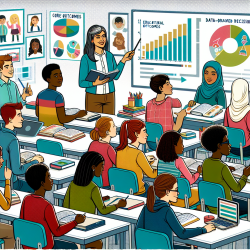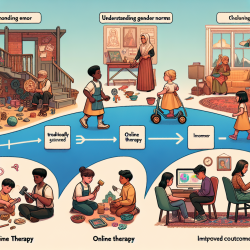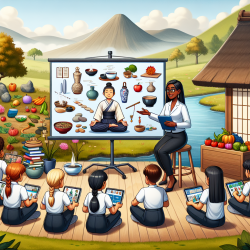As educators, we are constantly searching for effective strategies to motivate our students. Engaging students in their learning process can sometimes feel like an uphill battle, especially when dealing with diverse needs and abilities. Here at TinyEYE, we believe that motivation is the key to unlocking student potential. In this blog, we'll explore some fun and easy strategies to inspire and motivate students, whether you're teaching in a traditional classroom or providing online therapy services.
1. Create a Positive Learning Environment
Students thrive in environments where they feel safe, respected, and valued. Establishing a positive classroom culture can significantly impact their motivation. Here are a few tips:
- Encourage open communication and active listening.
- Celebrate achievements, no matter how small.
- Foster a sense of community and belonging.
- Implement flexible seating arrangements to make the classroom more inviting.
2. Set Clear and Achievable Goals
Goal setting is a powerful motivator. When students have clear, attainable goals, they are more likely to stay focused and motivated. Here's how you can help:
- Break down larger tasks into smaller, manageable steps.
- Use visual aids like charts and graphs to track progress.
- Provide regular feedback and celebrate milestones.
3. Incorporate Technology
Technology can be a fantastic tool to engage students. Interactive and multimedia resources can make learning more exciting and accessible. Consider these ideas:
- Use educational apps and games to reinforce learning.
- Incorporate videos and animations to explain complex concepts.
- Leverage online therapy services like TinyEYE to provide personalized support.
4. Encourage Student Autonomy
Giving students some control over their learning can boost their motivation. When students feel they have a say in their education, they are more likely to take ownership of their learning. Try these strategies:
- Offer choices in assignments and projects.
- Encourage self-assessment and reflection.
- Allow students to set their own learning goals.
5. Make Learning Fun
Fun and engaging activities can make a world of difference in student motivation. Incorporate games, hands-on activities, and creative projects to keep students excited about learning. Here are some ideas:
- Organize learning games and competitions.
- Incorporate art, music, and drama into lessons.
- Use real-world scenarios and problem-solving activities.
6. Build Strong Relationships
Students are more motivated when they feel connected to their teachers and peers. Building strong, supportive relationships can foster a positive learning environment. Consider these approaches:
- Take time to get to know your students individually.
- Show genuine interest in their lives and experiences.
- Encourage peer collaboration and group work.
Motivating students is an ongoing process that requires creativity, patience, and dedication. By implementing these strategies, you can create a dynamic and engaging learning environment that inspires students to reach their full potential. At TinyEYE, we are committed to supporting educators in their mission to motivate and engage students. For more information, please follow this link.










